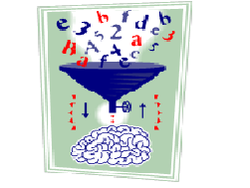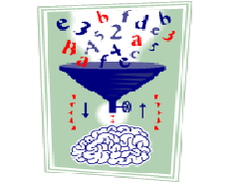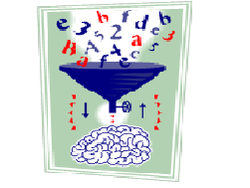


Have you ever taught a concept your students just couldn’t grasp? Or thought they had until you asked them to apply it? If you answered “yes” to either of these questions, you are not alone. Remember, if they haven’t caught it, you haven’t taught it. So how can you increase student learning, retention, and application?
The concept of learning requires that a change in behavior takes place. Would you say you had learned Spanish if you couldn’t speak it? Of course not. That’s why we cannot say a child has learned something if there is no change in his behavior. True learning has only happened when a child “gets it”, keeps it, and can use it in the future. Learning is not “cramming” for a test where the concepts, skills, and facts are forgotten shortly afterwards. Learner-centered teaching makes the difference in comprehension and retention.
Brain Research Prompts Changes in Teaching Methods
Getting “stuff” into long term memory is a key factor in learning (Zull, 2004, Educational Leadership). Brain researchers now believe the brain is “plastic” rather than static. In the process of learning, new neuronal pathways are formed and through practice these pathways become strengthened. Zull, a biochemist and teacher, used his knowledge of how the brain learns to change his own teaching methods. He went from a “factory model” teacher to a “learner-centered” one. Formerly, he relied on the “I lecture and you take notes” delivery model and a lesson plan format that utilized the presentation of theory, showing of examples, and then having students practice the skill, usually by completing worksheets. Sound familiar?
With new insights based upon brain research, Zull flipped his lesson plan format so that students experienced or practiced the skill first. Then he connected their hands-on learning to the theory or concept they needed to understand. Why the turn around? The building of neuronal pathways is facilitated by practice and emotion. Neither of these elements is evident in the factory model of teaching which, in fact, creates passivity and boredom. Involving students in constructing their knowledge and understanding of abstract concepts engages active practice and emotion, thus making the development of neuronal pathways quicker and easier.
Bob Pike’s EAT Model
Zull’s research supports the EAT model in Bob Pike’s Research-Based Creative Teaching Strategies (RCTS) program. Following this model, students engage in active, hands-on learning before they are given the theory for the concept. Through this process, students construct meaning in their own unique way under the guidance of their teacher. As students navigate through the activity, they become aware of the concepts, factors, and cause/effect relationships that have come into play. Lastly, the teacher draws out students’ understanding of the theory underlying the concepts and skills. This is the fundamental constructivist approach to lesson design and delivery according to EAT (Experience, Awareness, Theory).
Teachers already understand the importance of “hands-on learning”. EAT merely reverses the sequence so that the hands-on, experiential component comes first, not last in the lesson design. EAT is an example of teaching smarter, not harder. The payoff will be improved instruction and higher levels of student understanding, retention, and application. Try it! Your students’ brains will like it.
Dr. Zielke is a retired principal who currently works at the Professional Development Alliance in Joliet, Ill., as a school improvement consultant. After attending several Bob Pike seminars, he now incorporates multiple learner-centered strategies, including EAT, into his workshops for educators. Click here for more information on RCTS.
Don't miss out on updates and chances
to sharpen your skills with participant-centered learning.




3740 N Chestnut St #113 - Chaska, MN 55318-3053